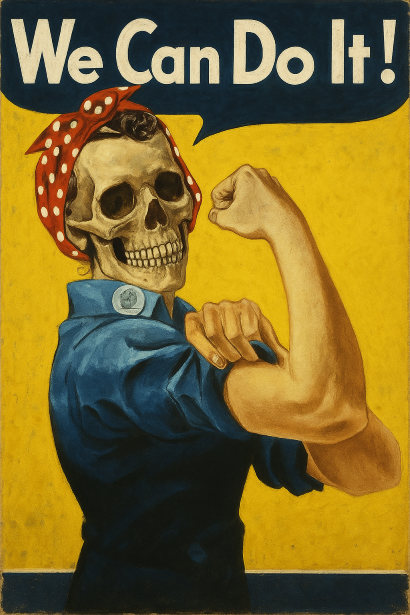Liberty Matters
War, Nonviolence, and Learning How to Change

Many thanks to my colleagues Joshua Ammons, Abby Hall, and Claudia Williamson for an engaging discussion of war’s impact on women and women’s rights. In this final reply, I’d like to highlight a few potential directions for future research.
Hall and Williamson both engage with the concept of institutional stickiness—under what conditions will the chaos of war “spark unintended openings for women’s progress,” as Williamson writes in her most recent response? When will changes persist, and when will there be a reversion to initial conditions or even a backlash against change? Detailed case study and ethnographic work are essential to teasing out whether there are underlying conditions that will support the development of new “power with” relationships, as Williamson suggests. This is an example of the opportunity for collaboration between scholars working with different research methods, as highlighted in Working Together: Collective Action, the Commons, and Multiple Methods in Practice by Amy Poteete, Marco A. Janssen, and Elinor Ostrom. Doing such work in conflict zones is difficult and dangerous in many ways, and as such also calls for collaboration with researchers living in affected communities.
I would also like to second Ammons’ call for greater attention to nonviolent resistance as a strategy for bringing about social change. As emphasized by scholars from Alexis Tocqueville to Vincent Ostrom, the ability to resolve social dilemmas peacefully cannot be taken for granted. Essentially, we can get better at changing. It takes practice to learn how to negotiate and devise peaceful compromises. Activism and peaceful freedom fighting—including for women’s rights, both in and out of wartime—could be an important way to both combat oppression and facilitate women and men learning to work together. In the long run, the development of this capacity to take collective responsibility for ones’ constitutional environment without relying on the state has the potential to support genuine democratic institutions, including universal political and economic rights. If social changes happen before these lessons are learned, the relevant individuals may not have the ability to preserve what has been gained.
This research agenda on nonviolence calls for empirical work but also brings new energy to the development of theories of liberalizing social change. In particular, the idea of getting better at changing has important implications for the conundrum of illiberalism within a liberal system. In essence, the problem is this: Liberalism requires a cosmopolitan acceptance of others’ right to choose their own values, even when they are different from our own. Yet, even if we limit ourselves to the acceptance of values that can co-exist with a rule of law and do not violate fundamental human rights, some of those values are likely to be fundamentally illiberal. As a consequence, commitment to the principles of liberalism may require the toleration of some degree of illiberal values, as Chandran Kukathas explores productively in his book The Liberal Archipelago.
If change can be induced non-violently (which does not mean easily or quietly), the presence of illiberal islands in the liberal archipelago becomes more palatable. Instead of debating whether or not to coercively intervene in illiberal institutional environments—as Hall correctly observes has not worked out well for the women (or indeed most of the men) of Afghanistan—we can focus on keeping open the pathways of change. By creating exit options for individuals and facilitating nonviolent activism, we can continue to expand our capacity to change and peacefully share those skills with others.
Copyright and Fair Use Statement
“Liberty Matters” is the copyright of Liberty Fund, Inc. This material is put on line to further the educational goals of Liberty Fund, Inc. These essays and responses may be quoted and otherwise used under “fair use” provisions for educational and academic purposes. To reprint these essays in course booklets requires the prior permission of Liberty Fund, Inc. Please contact oll@libertyfund.org if you have any questions.